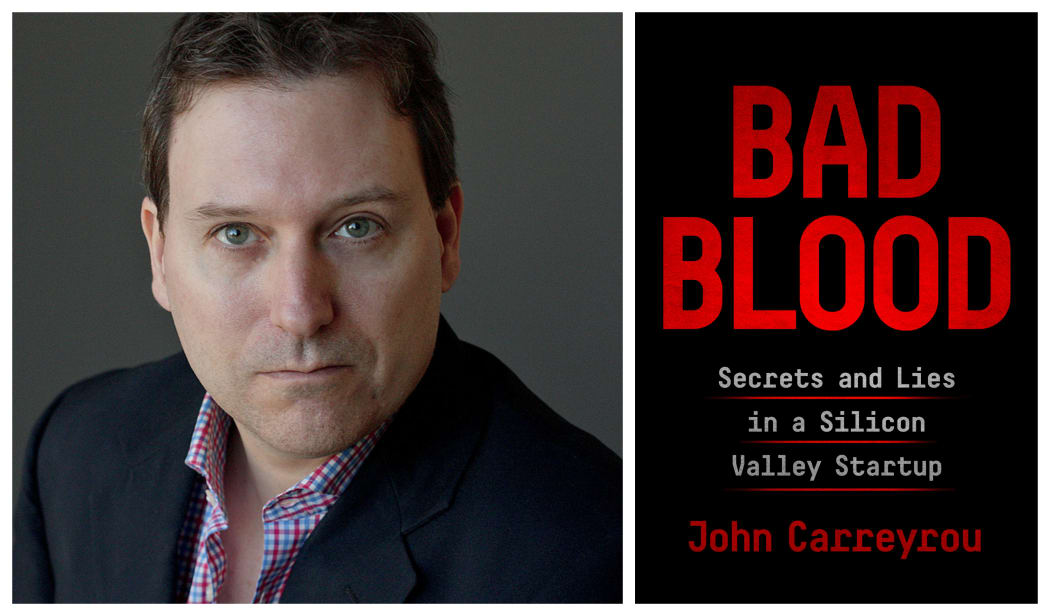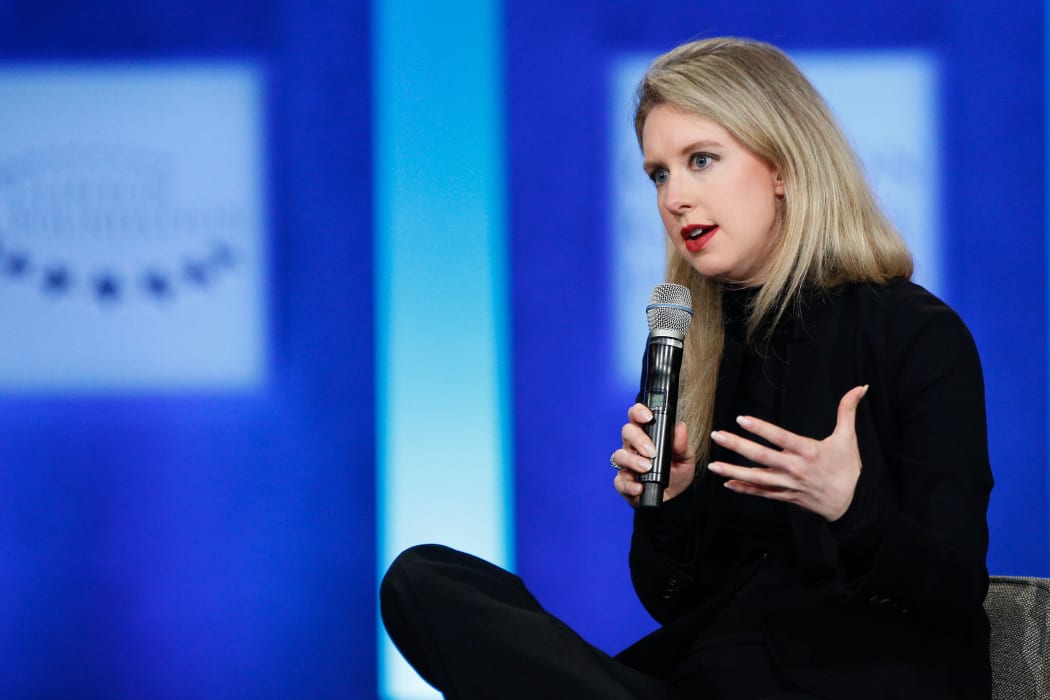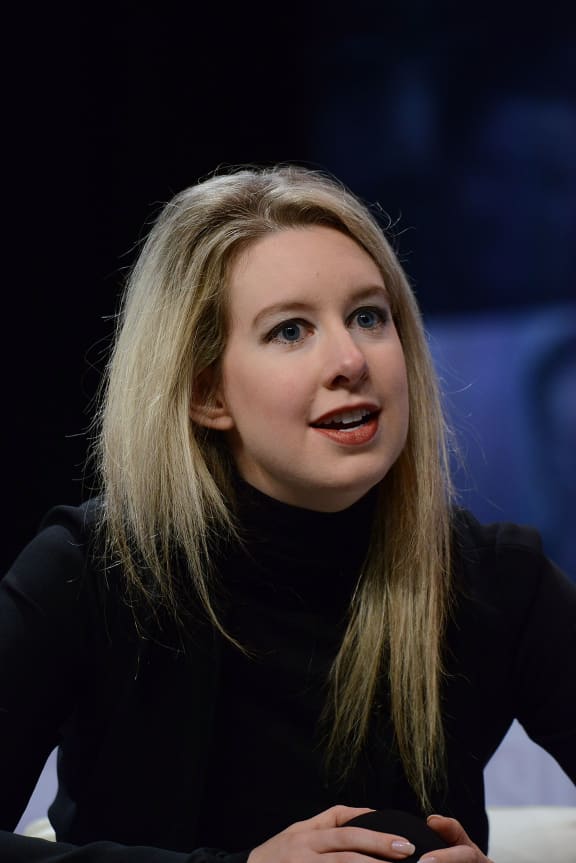The charismatic Elizabeth Holmes, founder of Theranos - the Silicon Valley blood-test startup exposed as a fraud by journalist John Carreyrou - probably justified her massive deception as the means to a noble end, he says.

Wall Street Journal reporter, John Carreyrou, author of Bad Blood Photo: supplied
Carreyrou, from the Wall Street Journal, started digging into unusual practices at Theranos, in 2014.
Holmes and her company claimed to have found a fast, cheap, accurate method of testing blood
The company was headed by a charismatic young woman, Elizabeth Holmes, who had come up with an idea to make a blood-testing method that was faster, cheaper and more accurate than conventional methods.
The vision was built on false promises and empty dreams, although it didn't stop the company from raising billions in venture capital.
John Carreyrou kept digging despite being warned off and exposed the scam in articles (in particular, one in October 2015), and his book, Bad Blood.
The film rights for the book were sold before the book was even written, with a documentary and a feature film starring Jennifer Lawrence now in the works.
Holmes and her chief operating officer Ramesh 'Sunny' Balwani - who she had been in a relationship with - also face 11 wire fraud and wire fraud conspiracy charges.
Theranos tech company: the prototypes
Carreyrou says Theranos began in 2003 as Holmes' dream for a product that would benefit humanity, and he thinks she justified the lies she told to investors and the public as the means to an end.
"When she dropped out of college she really did want to be an entrepreneur and she really did have a vision that she believed in and she threw herself into achieving," he says.
"She was 19 years old and she had a vision for a diagnostic device ... a sort of a bracelet that would draw minute amounts of blood from your wrist and simultaneously diagnose whatever ailed you, and cure you."
However, that vision soon bumped up against reality.
"This bracelet proved to be more science fiction than reality so she very quickly pivoted to what seemed more feasible to her at the time.
The next product the company worked on was a kind of cartridge and reader machine.
"The reader was size of a toaster and the cartridge was like a thick credit card, and the blood pricked from the finger would be put in the cartridge.
He says they aimed to use microfluidics - a new technology for manipulating liquids using the same techniques that build microchips - to produce a blood test result.
"That was probably the most ambitious thing that Theranos ever worked on, because it did involve the emerging field of microfluidics, but after several years of working on it they hit a brick wall and abandoned it in 2007."
He says they moved towards a new, different product.
"What was essentially a glue-dispensing robot ... a Theranos engineer ordered a glue-dispensing robot from a company called Fisnar in New Jersey, and then studied it and reprogrammed its robotic arm to hold a pipette and to sort of mimic the steps that a lab scientist would take at the bench to test blood.
"It was a pretty rudimentary machine and a big step down in terms of the ambition from the first microfluidic technology - but that’s what she amazingly went live with years later in fall of 2013 when she started offering the Theranos finger-stick testing in stores in California and Arizona."
The company somehow managed to get the finger-sticks for testing to Walgreens stores, and they were then sent back to be run through the robotic machine - named Edison - starting with a sample of 250 people.
However, Carreyrou discovered through his sources that only about 10 of those 250 were actually tested via the Edison machine.
"For the 240-odd other tests they actually used regular third party machines … actually there was one of the machines made by Siemens that they hacked, they modified it in order to adapt it to the tiny fingerstick samples."
Regardless, Holmes and her chief operating officer used the fact the product was available at Walgreens stores to massively boost investment in the company.
Worse was the fact the tests were unreliable.
"There are four or five other class of blood test that involved completely different laboratory instruments and laboratory techniques - and the Edison couldn’t do those.
"That’s one of the most egregious, most outrageous parts of this whole story is that the two people at the top - who were running this company and who were lying to investors - also had full knowledge that what they were doing in the lab was detrimental to patients."
He says he came across cases of patients who had health scares because of the faulty Theranos tests.
"Not only was it a financial fraud, it was a fraud that was putting patients in harm’s way."
Holmes' motivation to succeed
Carreyrou says Holmes is a fascinating character.
"I have no doubt that along the way she knew that she was lying and that she was exaggerating but I think she had what has been called 'noble cause corruption'.

Elizabeth Holmes speaks on stage during the closing session of the Clinton Global Initiative 2015. Photo: AFP / 2015 Getty Images
"She believed that what she was working on ... would be good for society and mankind. So the corners that she cut and the lies that she told on the way there she was able to rationalise in her mind as the ends justify the means."
He says part of her aim was born from a fear of needles inherited from her mother.
"Ironically when you come to research blood testing you learn that it’s actually more painful to prick the finger - which was the Theranos method of drawing blood - because there are a lot of nerves at the tip of a finger whereas there are none where you prick an arm with a syringe."
She was also very determined and driven to succeed, and "idolised" Steve Jobs, he says.
"She even took to wearing a black turtleneck as Steve Jobs of course famously had ... named some of the various Theranos device prototypes after Apple products.
"She hired the same advertising agency in LA that had worked on some iconic Apple advertising campaigns ... she met with the creative professionals of this agency on Wednesdays because she had learned that Steve Jobs had also met with them on Wednesdays.
"She had herself driven around in a car without a licence plate because Steve Jobs had famously driven around in a car without a licence plate.
"It’s fair to say that Steve Jobs and his myth loomed large in her mind, and that she really did want to be the second coming of Steve Jobs."
Fake it till you make it: Silicon Valley fame
It wasn't just Jobs that influenced her, however.

Holmes speaks at Forbes Under 30 Summit at Pennsylvania Convention Center on October 5, 2015, just days before Carreyrou's exposé. Photo: AFP / 2015 Getty Images
"I believe what was as important to her if not more than the money, was the fame," Carreyrou says.
"She wanted to be in this pantheon of Silicon Valley tech founders who were billionaires ... she was going to be the first woman to join their ranks, I think that was her main ambition."
He says her central mistake was in applying the Silicon Valley computer software ethos of "fake it till you make it" to a medical product.
"She was able simply to rationalise the gulf between where the technology was and where she claimed it was by looking at these other Silicon Valley tech founders who also had faked it until they made it.
"Larry Ellison, the founder of Oracle was famous in the early days of Oracle for exaggerating the capabilities of Oracle’s software and for shipping software that was crawling with bugs.
"The problem is that all those other tech founders ... they faked it and made it in the computer industry, and the computer industry is mostly about software.
"It’s unconscionable to operate that way in the medical business because people rely on your product, if you're in the medical business to make important health decisions.
Covering up a scandal
Carreyrou says he first heard of Holmes and Theranos in a New Yorker profile article in 2014. In early 2015 he got a tip from a blogger in Missouri who was suspicious "and had immediately smelled a rat because he knew a thing or two about blood testing".
"I was cognisant of the fact that my first source, the blogger, was two or three times removed from any real information but I also learned quickly that there was a primary source out there," he says.
"I within a few weeks made contact with the departed employee, the outgoing laboratory director who goes by the pseudonym Alan Bean in the book.
"Both of them - Elizabeth and Sunny - were warned repeatedly in particular by my source, the ex lab director, that the tests were unreliable and yet chose to go ahead anyway."
He continued chasing the story, despite Holmes making several attempts to shut it down, including using her influence with Theranos' biggest investor, and owner of the Journal - Rupert Murdoch.
"I learned that she had actually tried to appeal to him to kill my story on several occasions before it was published.
"In particular she went to his office in the News Corporation building in Midtown Manhattan on the eighth floor in September, which was two weeks before the story was published. At that point I was on the fifth floor, in the Journal’s newsroom, and I had no idea she was on the premises lobbying to kill my story."
Murdoch allowed the article to go ahead, but before that Carreyrou and the Journal had also been under pressure from Theranos' lawyer.
"Theranos’ counsel was a man named David Boies, who is very well known in America … a very feared litigator who in fact defeated Bill Gates back in the late '90s when he represented the Justice Department in its antitrust suit against Microsoft, also represented Al Gore before the Supreme Court before the US presidential recount in 2007.
"David Boies was known to be a very aggressive lawyer and his law firm Boies, Schiller & Flexner was known to be very zealous in their representation of their clients."
Boies and his associates tried to pressure the Wall Street Journal to renounce Carreyrou's reporting, twice coming to their offices.
The firm also discovered one of Carreyrou's sources, through Theranos.
"A young man by the name of Tyler Shultz, who was the grandson of the former Secretary of State George Shultz -
George Shultz was a board member at Theranos and he had got Tyler a job at Theranos after Tyler had graduated from Stanford in 2013.
He says Boies' attorneys ambushed Tyler at George's house in early summer, 2014.
"Tried to get him to admit that he was talking to me and tried to get him to reveal my other sources ... Tyler had to withstand enormous pressure and refused to cave and refused to sign any documents they put to him.
"In large part thanks to him I was able to go to press with my investigative story in October 2015 and blow the scandal open."

